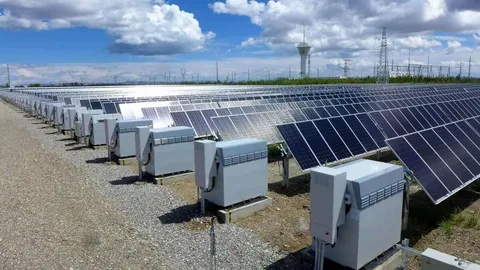As cities continue to expand and the demand for sustainable energy grows, the future of solar power system in urban living looks more promising than ever. Solar energy is rapidly evolving, making it an essential part of urban infrastructure and individual households alike. This article explores how advancements in solar technology, urban design, and energy policies are shaping the future of solar power in cities.
Growing Need for Sustainable Energy in Cities
Urban areas account for a significant portion of global energy consumption and carbon emissions. With increasing concerns over climate change and environmental degradation, cities are under pressure to adopt cleaner, renewable energy sources. Solar power stands out as a leading candidate due to its accessibility, scalability, and declining costs.
Innovations Driving The Future of Solar Power Systems in Urban Living
Several technological innovations are revolutionizing the way solar power is integrated into urban environments:
1. Building-Integrated Photovoltaics (BIPV)
Instead of traditional rooftop panels, BIPV involves embedding solar cells directly into building materials such as windows, facades, and roofs. This approach maximizes space efficiency and enhances the aesthetic appeal of buildings while generating clean energy.
2. Solar Microgrids and Energy Storage
Urban solar systems are increasingly paired with microgrids and advanced energy storage solutions. This allows buildings and neighborhoods to manage energy more effectively, improving reliability and reducing dependence on centralized power grids.
3. Smart Solar Systems and IoT Integration
The integration of solar power systems with smart technologies enables real-time monitoring and optimization of energy usage. Internet of Things (IoT) devices help users track production and consumption, leading to better energy management and cost savings.
Policy and Community Engagement
Government incentives, such as subsidies and tax breaks, are accelerating the adoption of solar technology in cities. Additionally, urban communities are becoming more engaged in sustainability efforts, often organizing collective solar projects like community solar gardens and rooftop sharing.
Challenges and Opportunities
While the future of solar power systems in urban living is bright, challenges such as limited rooftop space, shading from tall buildings, and regulatory hurdles remain. However, ongoing research and urban planning innovations aim to overcome these barriers by designing solar-friendly cityscapes and policies.
Conclusion
The future of solar power systems in urban living is marked by innovation, integration, and collaboration. As technology advances and urban areas adapt to the demands of a greener future, solar power will undoubtedly play a pivotal role in transforming cities into sustainable, energy-efficient environments. Embracing these changes today will ensure cleaner, healthier urban living for generations to come.


